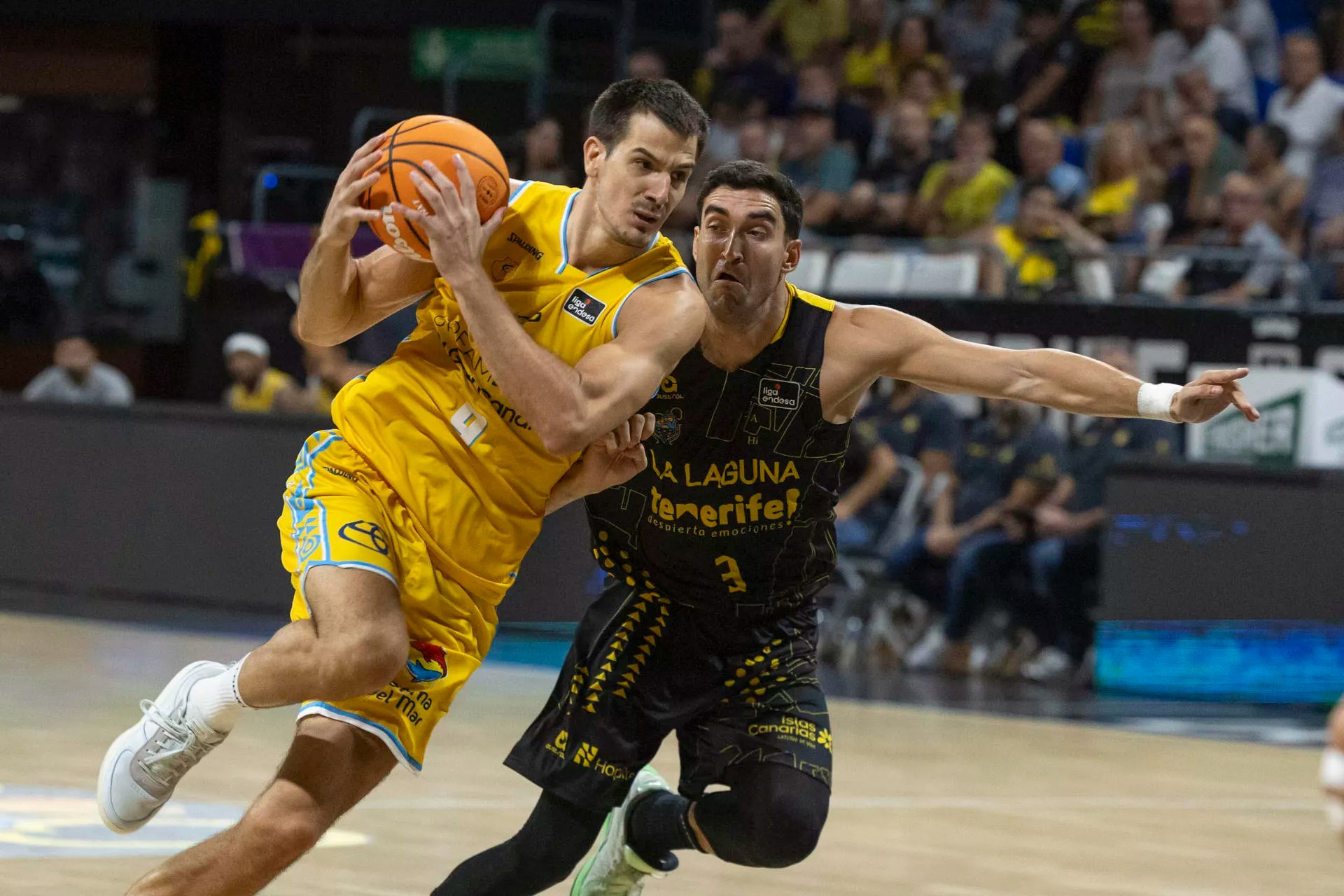Professor and researcher Juan Carlos Carracedo was born in Miranda de Ebro (Burgos) in 1941. “This precision,” he tells me, “is merely circumstantial; my mother was from La Rioja, from Sajazarra, and I must have caused some difficulty at birth because she was taken to the hospital in Miranda to give birth there. This perfectly illustrates that the place of birth has only a bureaucratic significance.” Perhaps by saying this, he means that he feels like a Canarian and a resident of Tenerife. “I met an extraordinary Irish woman, Pauline Agnew, while strolling through the Plaza del Charco in Puerto de la Cruz in the early 60s. From that meeting emerged a marriage that lasted 55 years, resulting in seven children, nine grandchildren, and now five great-grandchildren. I am a fortunate great-grandfather. Now, a widower, I find comfort in my large family, most of whom live within a stone’s throw of my home in Guamasa.” Professor Carracedo, who ranks among the world’s top scientists according to the prestigious Stanford University (USA), adds, “I have far exceeded the proverb of at least planting a tree, having a child, and writing a book.” The rest of his biography is centred on tireless scientific work, his extensive contributions to the Superior Council for Scientific Research studying the volcanoes of the Canary Islands, and he, like myself, was fortunate to live – and for Juan Carlos to study – the eruption of Teneguía in 1971 and the latest eruption of the Cumbre Vieja volcano in 2021.
-Many now say that the Teide is a danger, but you assert that the Teide is not the danger. Am I mistaken?
“The Teide is an active volcano, which entails danger that we cannot dismiss. However, scientific knowledge about its evolution, based on radiometric dating (K/Ar and 14C) and the geochemistry of its magmas, suggests that a summit eruption is unlikely in the future, like the last medieval eruption of the black lavas that formed its characteristic cone.”
-Let’s say we can be calm.
“The Teide began to form nested in the Caldera de Las Cañadas, resulting from the collapse of a large previous volcano: the Las Cañadas volcano. In its early days, it was built with dense basaltic magmas, which hindered its ascent to the crater. For the past 30,000 years, only the lighter, more evolved phonolitic magmas have managed to reach the summit. This volcano, the Old Teide, known to the Guanches, was lower and flatter, with a wide crater at its peak.”
-And it has continued to change in appearance.
“For thousands of years, it emitted phonolitic lavas until these also became too heavy, causing eruptions at its basal perimeter, forming peripheral domes like Montaña Blanca, Las Abejeras, Pico Cabras, and Bocas de Doña María. Ultimately, the volcano managed to emit a remnant of lighter obsidian phonolites, the black lavas, shaping the current Teide. Therefore, given its present height, even greater, it seems reasonable to think that a summit eruption is highly improbable.”
-What will future eruptions be like?
“The most likely will be similar to the recent ones in La Palma, of the Strombolian type, which are less explosive and dangerous. They are expected to occur in one of the two ridges of Tenerife: the northwest, extending from the Teide to Teno, or the northeast, from the Teide towards Anaga. While less dangerous in themselves, they pose a high risk due to the dense population and infrastructure in those areas.”
-Juan Carlos, what is the current state of volcanological research in Spain?
“It is never enough. Due to my age, I have witnessed and contributed my bit to a significant leap forward. When I began my thesis in the early 70s, Atlantis was still seriously considered as the origin of the Canaries, which were thought to be the peaks of the tallest mountains of the submerged continent. The work of hundreds of scientists worldwide has propelled the geological knowledge of the archipelago to its current level. And there is still much to discover.”
-There is still controversy.
“The exciting scientific debate remains alive. When I started studying the Canaries, there were no absolute ages. The first datings published in 1972 by American scientists marked a decisive change. But it was just the beginning. Hundreds of subsequent datings have clarified the origin and geological evolution of the Canaries in a long scientific debate that indeed remains alive. Furthermore, considerable advances have been made regarding the study and monitoring of active volcanism, primarily based on the essential and timely deployment of instrumental networks across all the islands, which were virtually non-existent just a few years ago.”
-Do you miss being active? Are you still researching?
“It is easy to answer that. I don’t find much difference from the time when I was officially active, except for a gratifying absence of bureaucracy. Nowadays, technological means are so powerful that one can be in face-to-face contact with scientists worldwide, in real-time. And AI opens up endless perspectives in that regard.”

-The global scientific community ranks you very highly. You must feel proud.
“I assume you are referring to my inclusion in the World’s Top 2% Scientists List, compiled annually by Stanford University in California, the intellectual hub of Silicon Valley. This prestigious list identifies the most outstanding researchers, representing the top 2% of all scientists worldwide. I feel proud of the evaluation system used, which assesses not only the number of publications made but also the impact my work has had on the scientific community. This is measured through citations of my work in publications around the world. If you are cited, it is because your contribution is valued and considered worth mentioning. What better recognition can there be?”
-Is the fear of impending eruptions in Tenerife justified?
“Certainly, and therefore it is essential to take appropriate measures: the study of volcanoes, effective monitoring with the density of instrumental networks deemed necessary, and advance planning of measures for potential eruptive events, etc.”
-So we must be prepared.
“Let us start from two undeniable facts. Among the most predictable geological disasters in Tenerife are earthquakes and volcanic eruptions. The former can be detected, but not in advance. Eruptions, on the other hand, can be detected and, although not predictable, they are subject to early detection before the event occurs.”
-There are differences.
“An earthquake involves the sudden release of significant accumulated stresses that, in themselves, show no prior evidence. An eruption, on the other hand, encompasses processes that manifest before it becomes visible, all caused by magma rising violently, breaking rocks in its path to the surface. These primarily produce deformation (ground inflation), temperature increases in the soil, gas emissions, and an increase in the frequency of earthquakes, becoming shallower.”
-Prevention seems fundamental, doesn’t it?
“It is necessary to develop action protocols for when an eruption is localised, even well in advance. The Copernicus programme, through Sentinel satellites, detects many of these manifestations. These action guides must consider not only the characteristics of the impending eruptive event but also its potential effects on the population and infrastructure, as well as the availability of adequate resources.”
-What do you think of some television series that erase the Canaries from the map? They seem apocalyptic to me.
“Apocalyptic advertisements can be considered a form of low-level geological terrorism, as they are based on unjustified theories without foundation. They undoubtedly cause significant harm to science due to their inconsistency, as well as to society, generating unnecessary anxiety and damaging the image of the Canaries, particularly in relation to such a crucial economic activity as tourism.”
-Where does the origin of this apocalyptic legend lie?
“Here I go. An illustrative example of what we are discussing is the tragic hypothesis that claimed the flank of Cumbre Vieja in La Palma would collapse during an eruption, causing a gigantic tsunami reaching the Atlantic coast of the United States, with waves dozens of metres high. This nonsense was disseminated by the BBC in the Horizon programme, known for its excellent production.”
-Well, the Cumbre Vieja volcano has already erupted and that did not happen.
“It is unnecessary to say that such exaggeration lacks scientific basis. After the BBC documentary aired in 2004, the eruption of 2021 occurred, and nothing of the sort happened, as expected.”
-What lies behind it?
“The explanation is quite petty: money. The extensive funding that this terror ‘thriller’ received, both for the research programme and for the channel that produced the report on the La Palma tsunami, came from insurance companies like Benfield Greig Group, the third-largest reinsurance company in the world, specialising in natural risks. The script was horrifying: giant waves, skyscrapers falling, nuclear plants exploding (no less than seven nuclear plants like Fukushima located on the American Atlantic coast). However, all of this resembled a science fiction movie rather than a report based on scientific rigor. Nonetheless, the vast majority of scientists adhere to the ethical code.”
-Did you expect an eruption as violent as that of Cumbre Vieja?
“I saw it as possible, although nothing is predictable concerning historical volcanism in La Palma. One characteristic of the ridges is that eruptions can occur with a similar probability at any point along their crest. However, their effects depend precisely on their location, as these will be more severe the further north the eruptive centre is situated. This is illustrated by the difference between the virtually innocuous eruption of 1971 in the south, and the one in 2021, located much further north along the ridge.”
-Should we feel reassured by the work of the IGN and Involcán?
“The work of the IGN has improved. I had past and well-known differences with the Institute. Today, it develops new guidelines and ideas more aligned with the nature of these islands. It is at an adequate level. As for Involcán, we have been discussing science. I do not want to get into politics.”
-Do we learn from past volcanoes? Are we getting used to coexisting with them?
“Each eruption serves as an intensive course in volcanology, both for scientists and for all those who are in one way or another related to knowledge and management of eruptive risks. This is not about simulations, which can also be useful, but about real tests where human lives are at stake.”















